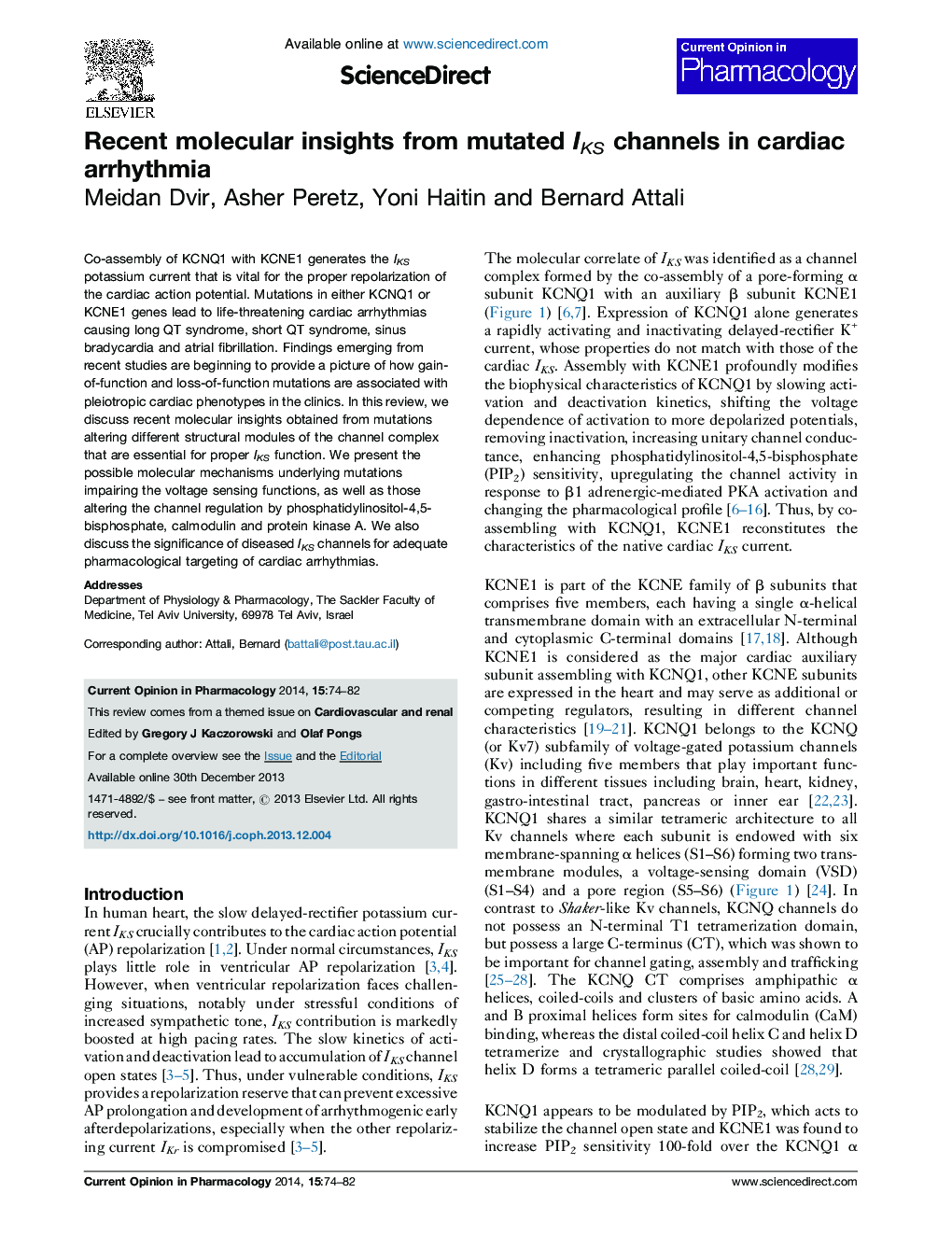| Article ID | Journal | Published Year | Pages | File Type |
|---|---|---|---|---|
| 2529863 | Current Opinion in Pharmacology | 2014 | 9 Pages |
•Co-assembly of KCNQ1 and KCNE1 generates the repolarizing cardiac IKS current.•Mutated IKS can lead to long or short QT, bradycardia and atrial fibrillation.•Gain-or loss-of-function mutations are associated with pleiotropic clinical phenotypes.•Mutations impair voltage-sensing function and modulation by PIP2, CaM and PKA.
Co-assembly of KCNQ1 with KCNE1 generates the IKS potassium current that is vital for the proper repolarization of the cardiac action potential. Mutations in either KCNQ1 or KCNE1 genes lead to life-threatening cardiac arrhythmias causing long QT syndrome, short QT syndrome, sinus bradycardia and atrial fibrillation. Findings emerging from recent studies are beginning to provide a picture of how gain-of-function and loss-of-function mutations are associated with pleiotropic cardiac phenotypes in the clinics. In this review, we discuss recent molecular insights obtained from mutations altering different structural modules of the channel complex that are essential for proper IKS function. We present the possible molecular mechanisms underlying mutations impairing the voltage sensing functions, as well as those altering the channel regulation by phosphatidylinositol-4,5-bisphosphate, calmodulin and protein kinase A. We also discuss the significance of diseased IKS channels for adequate pharmacological targeting of cardiac arrhythmias.
